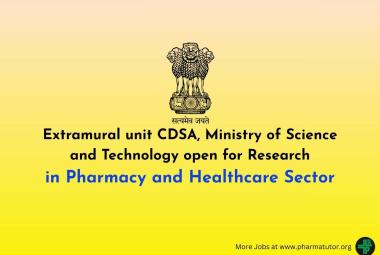{ DOWNLOAD AS PDF }
ABOUT AUTHORS
*R.Karthikeyan, E.Meghana, N.Gowthami, MD.Shajiya sultana, B.Mahesh reddy, SK.Magbul Johny, P.Srinivasa Babu
Department of Pharmacognosy, Vignan Pharmacy College, Vadlamudi – 522213.A.P
*rkcognosy@gmail.com
ABSTRACT
The synthesis of nanostructure substances, specifically metal nanoparticles, has accrued utmost concern over the last decade owing to their particular properties that cause them to applicable in distinctive fields of technology era. The biological technique of nanoparticle synthesis is a relatively easy, reasonably-priced, and environmental friendly approaches than the conventional chemical technique of synthesis and accordingly profits a top hand. The bio mineralization of nanoparticles in protein cages is one among such biological approaches used inside the era of nanoparticles. In this review we attempted to explore different techniques of synthesis of nanoparticles and its characterization. Further this review extended the usage of such nanoparticle in different fields.
[adsense:336x280:8701650588]
Reference Id: PHARMATUTOR-ART-2550
|
PharmaTutor (Print-ISSN: 2394 - 6679; e-ISSN: 2347 - 7881) Volume 5, Issue 12 Received On: 15/09/2017; Accepted On: 18/09/2017; Published On: 01/12/2017 How to cite this article: Karthikeyan R, Meghana E, Gowthami N, Sultana MDS, Reddy BM, Johny SKM, Babu PS;Phytofabrication for the Synthesis of Nanoparticles – Review; PharmaTutor; 2017; 5(12); 47-53 |
INTRODUCTION
The way we see, feel, and contact matters is ready to trade. In fact, the exchange has already begun and even though it has now not touched our lives in any significant way, the day while that takes place is around the corner. From self-cleaning home windows to first rate power efficient lights, nanotechnology is revolutionizing the manner we live. Lighting fixtures has been a critical issue of our lives, of our existence. There is rarely any doubt that nanotechnology could be very useful to guy. With all of the programs this new frontier of expertise has been visible from the human frame to industries and chemical substances; to this point, nanotechnology has lived as much as its name in enhancing the wealth of expertise possessed by man, highlighted the recent tendencies of the biosynthesis of inorganic nanoparticles together with metal nanoparticles, oxide nanoparticles, sulphide nanoparticles, and different usual nanoparticles. One-of-a-kind formation mechanisms of those nanoparticles may be discussed with the conditions to control the dimensions/shape and stability of particles. The packages of these biosynthesized nanoparticles in a wide spectrum of capability areas are offered including cancer treatment, targeted drug delivery, gene therapy and DNA analysis, biosensors, antibacterial agents, enhancing reaction.(Murray and Li .,1999).
The nanoparticles synthesized via biogenic approach present accurate polydispersity, dimensions and stability. The nanoparticles are synthesised via physical, chemical and biological methods. The physical and chemical techniques are extremely expensive. The biological methods of nanoparticles synthesis could assist to eliminate ruthless processing conditions, by using permitting the synthesis at physiological pH, temperature, strain, and at the same time, at negligible cost. Huge range of micro-organisms have been observed capable of synthesizing inorganic nanoparticles composite, either intra or extracellularly. Due to implausible properties, nanoparticles have been noteworthy in lots of fields in the recent years, such as health care, energy, agriculture, environment etc. The preparation of nanoparticles is established both by using (i) Nanoparticles synthesis, and by means of (ii) Processing of nanomaterials into nanostructure particles. On this evaluation, we've got discussed popular strategies to the synthesis of nanoparticles with the aid of diverse strategies and programs. The research and product tendencies within the region of nanotechnology have progressively multiplied, chiefly due to new and precious properties of nanomaterials. New nanomaterials, an inherent a part of nano technological traits, permit on the one hand, new products and answers. The probable packages of nanotechnology and nanoparticles in exclusive fields have reformed the sciences and industries that are discussed right here.( Li et al.,1999)
Synthesis of Nanoparticles
Physical and chemical methods of nanoparticle synthesis
Some of the commonly used physical and chemical methods include:
a) Sol-gel technique, which is a wet chemical technique used for the fabrication of metal oxides from a chemical solution which acts as a precursor for integrated network (gel) of discrete particles or polymers. The precursor sol can be either deposited on the substrate to form a film, cast into a suitable container with desired shape or used to synthesize powders.
b) Solvo-thermal synthesis, which is a versatile low temperature route in which polar solvents under pressure and at temperatures above their boiling points are used. Under solvo-thermal conditions, the solubility of reactants increases significantly, enabling reaction to take place at lower temperature.
c) Chemical reduction, which is the reduction of an ionic salt in an appropriate medium in the presence of surfactant using reducing agents. Some of the commonly used reducing agents are sodium borohydride, hydrazine hydrate and sodium citrate.
d) Laser ablation, which is the process of removing material from a solid surface by irradiating with a laser beam. At low laser flux, the material is heated by absorbed laser energy and evaporates or sublimates. At higher flux, the material is converted to plasma. The depth over which laser energy is absorbed and the amount of material removed by single laser pulse depends on the material’s optical properties and the laser wavelength. Carbon nanotubes can be produced by this method. e) Inert gas condensation, where different metals are evaporated in separate crucibles inside an ultra-high vacuum chamber filled with helium or argon gas at typical pressure of few 100 pascals. As a result of inter atomic collisions with gas atoms in chamber, the evaporated metal atoms lose their kinetic energy and condense in the form of small crystals which accumulate on liquid nitrogen filled cold finger. E.g. gold nanoparticles have been synthesized from gold wires.( Raveendran et al.,2003)
Chemical synthesis
Chemical method of synthesis is valuable as it takes tiny period oftime for synthesis of large quantity of nanoparticles. Nevertheless, inthis method, capping agents are necessary for size stabilization of thenanoparticles. Nanoparticles have been synthesized, most recurrentlyby three chemical techniques:
1. Dispersion of preformed polymers
2. Polymerization of monomers
3. Ionic gelation or coacervation of hydrophilic polymers
Dispersion of preformed polymers
A number of methodshave been recommended to prepare nanoparticles from PLA (polylacticacid), PLG (poly-D-L-glycolide), PLGA (poly-D-L-lactide-coglycolide)and PCA (Poly-ε-caprolactone), by dispersing the preformedpolymers.
Polymerization of monomers
Nanoparticles can moreover beprepared by polymerization of monomers. Polymeric nanoparticlesachieved from copolymers of methacrylic acid, acrylic esters ormetacrylics, have been extensively been used.
Ionic gelation or coacervation of hydrophilic polymers
Duringthis method, ionic gelation of the material experienced transition fromliquid to gel due to ionic interactions. Chitosan, gelatine and sodiumalginate is utilized for preparation of hydrophilic nanoparticles byionic gelation. Nanoparticles can be prepared from a wide range ofmaterials such as proteins, polysaccharides and synthetic polymers, etc. usually used reductants are borohydride, citrate, ascorbateand elemental hydrogen. Furthermore, chemicals reagents usednormally for nanoparticles synthesis and stabilization are toxic andlead to byproducts that are not ecofriendly. (Sauto and Kreuter ,1994)
Physical synthesis
The above method is hardly ever used methods in physical processes;metal nanoparticles are synthesized by evaporation–condensation,which might be carried out using a tube furnace at atmosphericpressure. The starting material inside a boat centered at the furnace isvaporized into a carrier gas. Nanoparticles of different materials suchas Ag, Au, PbS and fullerene have formerly been produced using theevaporation/condensation techniques. Initially, the designand description of two-dimensional arrays of colloidal Au particlesare existing, and later Grabar reported a new loom to develop Aucolloid through surface-enhanced Raman scattering (SERS) substrates.Au colloid monolayers possess a set of features that make them veryattractive for both basic and applied uses, including uniform roughness,high stability, and biocompatibility. Recently Mirza and Shamshadinvestigated the gold nanoparticles (Au NPs) functionalized withan anticancer drug, doxorubicin. Their study laid the basis of a linkingmethodology via hybrid multi drug, and receptor labelled NPs mightbe developed, which may provide an alternative design for nanosizeddrug-delivery system. (Nour et al.,2010)
Biological synthesis
Our key purpose is to highlight on the biological synthesis ofnanoparticles, because of its easiness of rapid synthesis, controlledtoxicity, controlling on size characteristics, reasonable, and eco-friendly approach. A sum of natural sources is there for nanoparticlesynthesis, together with plants, fungi, yeast, bacteria, etc. Additionally,the unicellular and multicultural organisms are able to synthesiseintracellular and extra cellular inorganic nanoparticles.
NOW YOU CAN ALSO PUBLISH YOUR ARTICLE ONLINE.
SUBMIT YOUR ARTICLE/PROJECT AT editor-in-chief@pharmatutor.org
Subscribe to Pharmatutor Alerts by Email
FIND OUT MORE ARTICLES AT OUR DATABASE
Nanoparticle synthesis by plant extracts
Make use of plants in thesynthesis of nanoparticles has drawn more interest of workers becauseit provides single step biosynthesis process. Plants tender a superioroption for synthesis of nanoparticle, as the protocols involving plantsources are free from toxicants; furthermore, natural capping agentsare readily supplied by the plants (Figure 1).The production of gold and silver nanoparticles using Geraniumextract, Aloe veraplant extracts, sundried Cinnamomumcamphoraand Azadiractaindicaleaf extract has been explained Inexpensive reduction of silver and gold ions present concurrentlyin solution, during exposure to plant leaf extract, generates bimetallicsilver and gold shell nanoparticles. The information is also available forthe synthesis of silver nanoparticles, using Plumeriarubraplant latex. Nanoparticle synthesis furthermore carried out using Szyygiumaromaticumbud extract, Murrayakoenigiileaf extract. This synthesisis owing to the natural reducing agent eugenol and could be carbazolespresent in the extracts correspondingly. Biosynthesis of goldnanoparticles utilizing the leaf extract of Mirabilis jalapawas explicated. (Vithiya and Sen , 2011)

Figure 1: Synthesis of nanoparticles from plant extract
Nanoparticle synthesis by bacteria
In previous years, synthesisof nanoparticles using bacteria has enlarged comprehensively due toits immense application. Bacillus species has depicted to synthesisemetal nanoparticles, researchers showed the ability of bacteria todecrease silver and fabrication of extracellularly, consistently circulatednanoparticles, ranging from 10-20 nm size. The Silver producingbacteria isolated from the silver mines exhibit the silver nanoparticlesaccumulated in the periplasmic space of Pseudomonas stutzeri AG259. Bacteria are also used to synthesize gold nanoparticles reported that whole cells of a novel strain of Marinobacterpelagius are applicable for stable, monodisperse gold nanoparticleformation has been reported use of Lactobacillusstrains to synthesise the titanium nanoparticles. The understanding ofnatural processes will apparently help in the discovery of entirely newand unexplored methodology of metal nanoparticle synthesis. (Gurav et al., 1994)
Nanoparticle synthesis by fungi
Biological production ofnanoparticles by fungi is determined nowadays because of theirreception towards toxicity, higher bioaccumulation, comparativelyeconomic, effortless synthesis method and simple downstreamprocessing and biomass handling.Extracellular biosynthesis of silver nanoparticles by Aspergillusniger, Fusarium solaniand Aspergillus oryzae are reportedto produce silver nanocrystals. The Pleurotussajorcajuwas alsoused for synthesis of nanoparticles extracellularly. The sphericalnanoparticle can be synthesized by Trichoderma viride. Prologueof silver ions to Fusarium oxysporumleads to synthesis of stableAg hydrosols. Phomaglomeratahas been traced to producesilver nanoparticles, and its efficiency against E.coli, S. aureus and P.aeruginosa has been assessed. The genus Penicilliumseems tohave a superior contender for the silver nanoparticle synthesis, whereproduction proceeds via extracellular mechanism. (Magnusson et al., 1999)
Nanoparticle synthesis by yeast
The extracellular synthesis ofnanoparticles in huge quantities, with straightforward downstreamprocessing. This grouphas been involved in isolation of silver tolerant yeast strain MKY3,by inoculating with aqueous silver nitrate. The formation of 2-5 nmsilver nanoparticles takes place in the forced ecological conditions. Thesynthesis of cadmium nanoparticles by using Candida glabrataandSchizosaccharomycepombe.The silver and gold nanoparticles biosynthesis, using an extremophilic yeast strain isolated fromacid mine drainage. The marine yeast Rhodosporidiumdiobovatumhas been explored for intracellular synthesis of stable lead sulphidenanoparticles. (Kruis et al., 2000)
Nanoparticle synthesis by biological particles
Biological particleslike viruses, proteins, peptides and enzymes could be exploited forbiosynthesis of nanoparticles. For the mineralization ofinorganic materials, Cowpea chlorotic mottle virus and cowpea mosaicvirus have been employed. Tobacco mosaic virus helps for the mineralization of sulphide and crystalline nanowires. Peptides arecompetent of nucleating nanocrystal growth, and have been recognizedfrom combinatorial screens and demonstrated on the surface of M13bacteriophage. (Schmidt-Ott., 1988)
Characterization
Characterization of nanoparticles is significant to appreciateand control nanoparticles synthesis and applications. Nanoparticlescharacterization is executed using a range of diverse techniqueslike scanning and transmission electron microscopy (SEM, TEM),Fourier transform infrared spectroscopy (FTIR), X-ray photoelectronspectroscopy (XPS), atomic force microscopy (AFM), dynamic lightscattering (DLS), powder X-ray diffractometry (XRD), and UV–Vis spectroscopy. These techniques are helpful to resolve diverseparameters such as particle size, shape, crystallinity, fractal dimensions,pore size and surface area. Additionally, orientation, intercalation anddispersion of nanoparticles and nanotubes in nanocomposite materialscould be decided by these techniques. The morphology and particle sizepossibly will be determined by TEM, SEM and AFM. The improvementof AFM over conventional microscopes such as SEM and TEM isthat AFM technique measures 3D images, so that particle height andvolume can be intended. Moreover, dynamic light scattering is appliedfor determination of particles size distribution. Furthermore, X-raydiffraction is exercise for the determination of crystallinity, while UV–Vis spectroscopy is utilized to confirm sample formation by exhibitingthe Plasmon resonance. (Grabar et al.,1995)
Applications
There are widespread applications of nanoparticles such aspharmaceuticals, cosmetics, food and beverages, agriculture, surfacecoating, polymers; etc. few of them are discussed here.
Nanoparticles as potent antimicrobial agent
The silver nanoparticles synthesised using an endophytic fungus,Pestalotia sp., isolated from leaves of Syzygiumcuminihas antibacterialactivity against human pathogens, i.e. S. aureus and S. typhi.Silver nanoparticles showed powerful bactericidal potential againstboth Gram-positive and Gram-negative bacteria. Numbers of silvernanoparticles are used against pathogenic bacteria. The bactericidal prospective of silver nanoparticles against the MDR bacteria are also investigated. (Mirza et al., 2011)
Nanoparticles in electrochemical sensors and biosensors
A set of forms of nanoparticles such as oxide, metal andsemiconductor nanoparticles have been utilized for constructingelectrochemical sensors and biosensors, and these nanoparticles play diverse roles in different sensing systems. The significantfunctions provided by nanoparticles comprise the immobilizationof biomolecules, the catalysis of electrochemical reactions, and theimprovement of electron transfer among electrode surfaces andproteins, labelling of biomolecules, and still acting as reactant. Theexclusive chemical and physical properties of nanoparticles make themenormously appropriate for designing new and enhanced sensingdevices, particularly electrochemical sensors and biosensors. Thegold nanoparticles are most frequently used for the immobilizationof proteins initially attached gold nanoparticlesto gold electrodes modified with cysteamine monolayer, and theneffectively immobilized horseradish peroxidase on these nanoparticles.An additional type of biomolecules, DNA, can also be immobilizedwith nanoparticles, and used for the creation of electrochemicalDNA sensors. In command to immobilize DNA onto the surfacesof nanoparticles, the DNA strands are frequently modified withmeticulous functional groups that can work together powerfully withconvinced nanoparticles. (Shankar et al.,2004)
Nanoparticles in medicine and healthcare
Nanoparticles have been utilised newly to develop the presentimaging techniques for in vivo diagnosis of biomedical disorders.Presently, Iron oxide nanoparticles are being used in patients for bothdiagnosis and therapy, leading to more effective medication with lessunfavourable effects. An exclusive, susceptible and greatly explicitimmunoassay system based on the aggregation of gold nanoparticlesthat are coated with protein antigens, in the attendance of theircorresponding antibodies, was also developed.Nanoparticles, as drug delivery systems, are capable to upliftthe several crucial properties of free drugs, such as solubility, in vivostability, pharmacokinetics, biodistribution and enhancing theirefficiency. In this facet, nanoparticles could be used as potentialdrug delivery systems, owing to their advantageous characteristics.As an illustration of cellular delivery, mixed monolayer protectedgold clusters were oppressed for in vitro delivery of a hydrophobicfluorophore. Pandey and Khullerdesigned nanoparticlefor the growth of oral drug delivery system, and recommended thatnano-encapsulation may be useful for developing an appropriate oraldosage form for streptomycin, and for other antibiotics that are, if notinjectable.Elechiguerra et al. demonstrated the interaction ofmetal nanoparticles with viruses and explained that silver nanoparticlesexperience a size-dependent interaction with HIV-1; the nanoparticlesof 1-10 nm close to the virus. The usual spatial understanding of theattached nanoparticles, the centre-to-centre space among nanoparticlesand the bare sulfur-bearing residues of the glycoprotein knobssuggested that, through favoured binding, the silver nanoparticlesprohibited the HIV-1 virus from binding to host cells. Currently, themajority imaging studies using gold nanoparticles are carried out in cellculture. The functional cellular imaging about single molecules hasbeen reported by Peleg et al., captivating benefit of the enhancedsecond harmonic signal by antibody conjugated gold nanospheres.The exploitation of nanoparticles in cosmetics and medicinecoating is widely increased day by day. The metal oxides in nanoparticlesuch as zinc oxide and titanium dioxide now emerge on the componentrecords of household products, as general and assorted as cosmetics,sunscreens, toothpaste, and medicine. (Chandran et al., 2006)
Nanoparticles in agriculture
Nanotech delivery systems for pests, nutrients and plant hormones
In the proficient use of agricultural natural assets like water,nutrients and chemicals during precision farming, nanosensors andnano-based smart delivery systems are user friendly. It makes the useof nanomaterials and global positioning systems with satellite imagingof fields, farm supervisors might distantly detect crop pests or facts ofstress such as drought. Nanosensors disseminated in the field are ableto sense the existence of plant viruses and the level of soil nutrients.To put aside fertilizer consumption and to minimize environmentalpollution, nanoencapsulated slow release fertilizers have also becomea style.To check the quality of agricultural manufacture, nanobarcodesand nanoprocessing could be used. Li et al. used the idea ofgrocery barcodes for economical, proficient, rapid and effortlessdecoding and recognition of diseases. They created microscopic probesor nanobarcodes that may perhaps tag multiple pathogens in a farm,which may simply be detected using any fluorescent-based tools.All the way through nanotechnology, scientists are capable to studyplant’s regulation of hormones such as auxin, which is accountablefor root growth and seedling organization. Nanosensors have beendeveloped that reacts with auxin. This is a step forward in auxinresearch, as it helps scientists know how plant roots acclimatize to theirenvironment, particularly to marginal soils. (Huang et al., 2007)
NOW YOU CAN ALSO PUBLISH YOUR ARTICLE ONLINE.
SUBMIT YOUR ARTICLE/PROJECT AT editor-in-chief@pharmatutor.org
Subscribe to Pharmatutor Alerts by Email
FIND OUT MORE ARTICLES AT OUR DATABASE
Nanotechnology for crop biotechnology
Nanocapsules canfacilitate successful incursion of herbicides through cuticles andtissues, allowing slow and regular discharge of the active substances.This can be act as ‘magic bullets’, containing herbicides, chemicals orgenes which target exacting plant parts to liberate their substance.Torney et al. has exploited a 3 nm mesoporous silicananoparticle in delivering DNA and chemicals into isolated plantcells. Mesoporous silica nanoparticle are chemically coated and actas containers for the genes delivered into the plants, and triggers theplant to take the particles through the cell walls, where the genes are putin and activated in a clear-cut and controlled way, without any toxicoside effects. This technique firstly has been applied to establish DNA fruitfully to tobacco and corn plants. (Shankar and Pala, 2010)
CONCLUSIONS
Nanoparticles present an extremely suitable platform for a numerous variety of biological applications. Because it presents the single step method for biosynthesis of nanoparticles draws greater researchers to head for future developments inside the location of healthcare, biosensors, electrochemical sensor and agriculture medicine. In this assessment, we express nanoparticles synthesis using biological techniques. These techniques are commercially economic and environment friendly. Relationship of unique synthesis methods, namely physical, chemical and biological techniques beneficent highlighting to biogenic synthesis is documented here. Similarly progresses are suitable with the intention to revolve the impact of nanoparticle technology right into a rational practical method.
REFERENCES
1). Abou El-Nour K.M.M., Eftaiha A., Al-Warthan A., Ammar R.A.A (2010)., Synthesis and applications of silver nanoparticles. Arabian Journal of Chemistry 3: 135-140.
2). Alonso M.J (1996)., Nanoparticulate drug carrier technology. In: S. Cohen, H. Bernstein (Eds.), Microparticulate systems for the delivery of proteins and vaccines. Marcel Dekker, New York, USA 203-242.
3). Calvo P., Remunan-Lopez C., Vila-Jato J.L., Alonso M.J (1997)., Novel hydrophilic chitosan-polyethylene oxide nanoprticles as protein carriers. J ApplPolymSci 63: 125-132.
4). Chandran S.P., Chaudhary M., Pasricha R., Ahmad A., Sastry M (2006)., Synthesis of gold nanotriangles and silver nanoparticles using Aloe vera plant extract. BiotechnolProg 22: 577-583.
5). Chen H., Roco M.C., Li X., Lin Y (2008).,Trends in nanotechnology patents. Nat Nanotechnol 3: 123-125.
6). Christensen L., Vivekanandhan S., Misra M., Mohanty A (2011)., Biosynthesis of silver nanoparticles using murrayakoenigii (curry leaf): An investigation on the effect bof broth concentration in reduction mechanism and particle size. Adv Mat Lett 2: 429-434.
7). Ferrari M (2005)., Cancer nanotechnology: opportunities and challenges. Nat Rev Cancer 5: 161-171.
8). Gao X., Cui Y., Levenson R.M.,Chung L.W., Nie S (2004).,In vivo cancer targeting and imaging with semiconductor quantum dots. Nat Biotechnol 22: 969-976.
9). Grabar K.C., Freeman R.G., Hommer M.B., Natan M.J (1995)., Preparation and characterization of Au colloid monolayers. Anal Chem 67: 735-743.
10). Gurav A., Kodas T., Wang L., Kauppinen E., Joutsensaari J (1994)., Generation of nano-meter size fullerene particles via aerosol routes. Chem Phys Lett 218:304-308.
11). Huang J., Li Q., Sun D., Lu Y., Su Y et al. (2007)., Biosynthesis of silver and gold nanoparticles by novel sundried Cinnamomumcamphora leaf. Nanotechnology 18: 11-15.
12). Kalpana Devi V., Sumathi R., Varalakshmi P (1994)., Evaluation of the antidotal effect of DL-?-lipoic acid against mercuric chloride induced acute renal dysfunction. Med Sci Res 22: 859-862.
13). Kreuter J (1994)., Nanoparticles. In: Colloidal drug delivery systems. J K Ed Marcel Dekker, New York, USA 219-342.
14). Kruis F.E., Fissan H., Rellinghaus B (2000)., Sintering and evaporation characteristics of gas-phase synthesis of size-selected PbS nanoparticles. Mater SciEng B 69: 329-334.
15). Li Y.,Duan X., Qian Y., Yang L., Liao H (1999).,Nanocrystalline silver particles: synthesis, agglomeration, and sputtering induced by electron beam. J Colloid Interface Sci 209: 347-349.
16). Magnusson M.H., Deppert K., Malm J.O., Bovin J.O., Samuelson L (1999)., Gold nanoparticles: production, reshaping, and thermal charging. J Nanopart Res 1: 243-251.
17). Mirza A.Z., Shamshad H (2011)., Preparation and characterization of doxorubicin functionalized gold nanoparticles. Eur J Med Chem 46: 1857-1860.
18). Murray C.B., Kagan C.B., Bawendi M.G(2000)., Synthesis and characterisation of monodisperse nanocrystals and close-packed nanocrystal assemblies. Annu Rev Mater Res 30: 545-610.
19). Pala R., Pathipati U.R., Bojja S (2010)., Qualitative assessment of silver and gold nanoparticle synthesis in various plants: A photobiological approach. J Nanopart Res 12: 1711-1721.
20). Patil C.D., Patil S.V., Borase H.P., Salunke B.K., Salunkhe R.B (2012)., Larvicidalavtivity of silver nanoparticles synthesised using Plumeriarubra plant latex against Aedesaegypti and Anopheles stephensi. Parasitol Res 110: 1815-1822.
21). Raveendran P., Fu J., Wallen SL (2003).,Completely “green” synthesis and stabilization of metal nanoparticles. J Am Chem Soc 125: 13940-13941.
22). Sauto E.B., Severino P., Santana M.H.A (2012)., Preparation of polymeric nanoparticles by polymerization of monomers-Part I. Polímeros 22: 96-100.
23).Schmidt-Ott A (1988)., New approaches to in-situ characterization of ultrafine agglomerates. J Aerosol Sci 5: 553-563.
24). Shankar S.S., Rai A., Ahmad A., Sastry M (2004)., Biosynthesis of silver and gold nanoparticles from extracts of different parts of the Geranium plant. Applications in Nanotechnology 1: 69-77.
25). Shankar SS., Rai A., Ahmad A., Sastry M (2004)., Rapid synthesis of Au, Ag, and bimetallic Au core-Ag shell nanoparticles using Neem (Azadirachtaindica) leaf broth. J Colloid Interface Sci 275: 496-502.
26). Singh A.K., Talat M., Singh D.P., Srivastava O.N (2010)., Biosynthesis of gold and silver nanoparticles by natural precursor clove and their functionalization with amine. J Nanopart Res 12: 1667-1675.
27). Vankar P.S., Bajpai D (2010)., Preparation of gold nanoparticles from Mirabilis jalapa flowers. Indian J BiochemBiophys 47: 157-160.
28). Vauthier C., Beanabbou S., Spenlehauer G., Veillard M., CouvreurP(1991)., Methodology of ultradispersed polymer system. S T P Pharm Sci 1: 109-116.
29). Vithiya K, Sen S (2011)., Biosynthesis of nanoparticles. Int J Pharm Sci Res 2:2781-2785.
NOW YOU CAN ALSO PUBLISH YOUR ARTICLE ONLINE.
SUBMIT YOUR ARTICLE/PROJECT AT editor-in-chief@pharmatutor.org
Subscribe to Pharmatutor Alerts by Email
FIND OUT MORE ARTICLES AT OUR DATABASE









